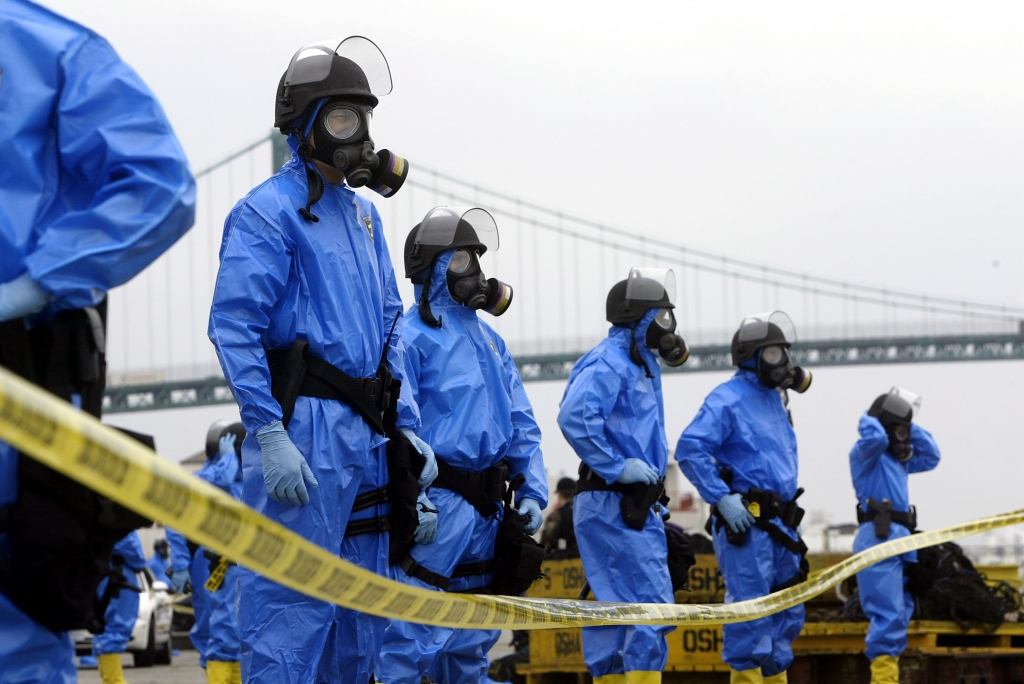-
Tips for becoming a good boxer - November 6, 2020
-
7 expert tips for making your hens night a memorable one - November 6, 2020
-
5 reasons to host your Christmas party on a cruise boat - November 6, 2020
-
What to do when you’re charged with a crime - November 6, 2020
-
Should you get one or multiple dogs? Here’s all you need to know - November 3, 2020
-
A Guide: How to Build Your Very Own Magic Mirror - February 14, 2019
-
Our Top Inspirational Baseball Stars - November 24, 2018
-
Five Tech Tools That Will Help You Turn Your Blog into a Business - November 24, 2018
-
How to Indulge on Vacation without Expanding Your Waist - November 9, 2018
-
5 Strategies for Businesses to Appeal to Today’s Increasingly Mobile-Crazed Customers - November 9, 2018
Pentagon can’t tell why anthrax shipped to 7 countries was alive
“Obviously, when over half of anthrax batches presumed to be inactivated instead prove to contain live anthrax spores, we have a major problem, and the numbers confirm this judgment”, Work said.
Advertisement
All of the labs had different protocols for handling anthrax, which is one of the factors cited by the report as likely contributing to the mistakes.
Kendall’s report found that the issue is “an institutional problem at [Dugway] and does not necessarily reflect on any one individual”.
“By any measure, this was a massive institutional failure with a potentially risky biotoxin”, Deputy Secretary of Defense Robert Work said in a media briefing Thursday.
“The leadership at Dugway should have understood that”, Kendall said, adding that the discrepancy was why he “recommended a formal investigation” into the staff at the facility.
In the report, the Pentagon stresses that anthrax is “an exceptionally resilient organism”.
Dugway failed to use enough radiation to kill anthrax and it did not correctly conduct subsequent tests to confirm the anthrax was dead.
“It is clear that BA (Bacillus anthracis) spores are particularly hard to kill and live spores injured by irradiation may be able to fix their injuries over time”, the report said.
All of the labs to which the samples were sent were free to send samples on to other places, and so the Department of Defense has been unable to account for all of the samples.
Each military lab developed its own procedures for handling the anthrax, Work said, and all seem to be following those procedures.
The four labs that handle anthrax are the Army’s labs at Dugway Proving Ground in Utah, and in Maryland, the Edgewood Chemical Biological Center, the Army Medical Research Institute of Infectious Diseases and the Naval Medical Research Center. The specimen was part of a project to develop a new diagnostic test for potential bioterror pathogens.
However, in May, the Centers for Disease Control and Prevention (CDC) reported that irradiated anthrax samples contained some live spores.
The lab at Dugway Proving Ground in Utah failed to completely kill live samples of anthrax before sending it around the world.
Police are investigating after a group of climbers discovered a skeletal human foot inside a hiking boot at Little Cottonwood Canyon.
Officials said researchers at the three other Defense Department labs that handle anthrax, all of which are in Maryland, had better procedures and worked safely with the bacterium.
Geoff says the lab wasn’t breaking any rules, but the procedure they used allowed them to overload the machine they used to kill anthrax with the samples. “In doing so, they helped ensure nobody was infected by anthrax”.
The 38-page report, released Thursday, also found out that testing for live spores may have not raised any alarms because the sample sizes were too small or incubation periods too short between irradiation and testing. In a 2008 email, Ivins discussed how some think only 10% of an irradiated batch needed to undergo sterility testing, but that he’d found at least 50% should be tested because of past irradiation failures. Ten soldiers and five airmen were among 22 personnel at Osan Air Base in South Korea who were treated with antibiotics as a precaution after their possible exposure to anthrax, the Pentagon said in May.
Advertisement
“A key finding of the committee is that there is insufficient technical information in the broader scientific community to guide the development of thoroughly effective protocols for inactivation of spores and viability testing of BA”, the report said.





























